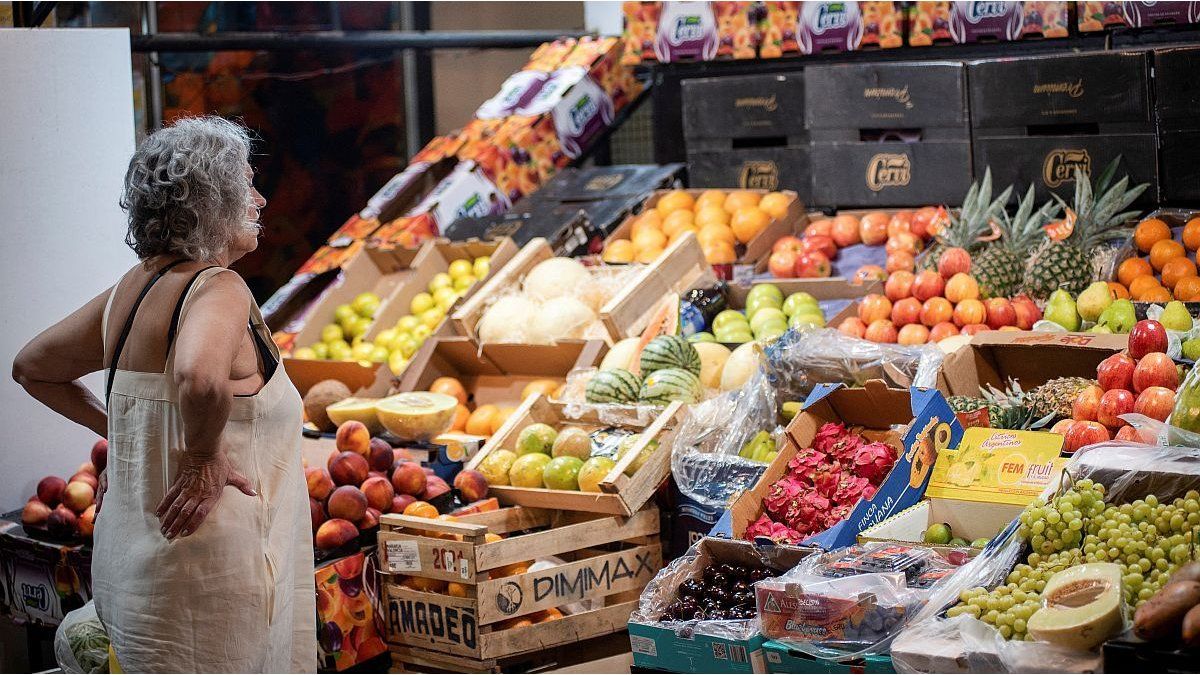The National Institute of Statistics and Census (INDEC) The Consumer Price Index (CPI) for July will be released on Wednesday. The data is expected to show a slowdown compared to the June measurement, standing at around 4% and resuming a downward trend after the increase of the previous month.
After breaking a five-month slowdown with a 4.6% increase in June from 4.2% previously, the inflation index is expected to have shown a slowdown in the pace of price increases in July.
The government is confident that the figure will be positive, compared to private forecasts, which, while they maintain that it will be low, will not be as high as the economic team expects. The Minister of Economy, Luis Caputo, suggests that the CPI could be close to 3% instead of the 4% estimated by several private consultancies.
The excessive increases and the causes
In this context, a report by the Center for Political Economy of Argentina (CEPA) warned of an excessive rise in the price of fruits and vegetables, despite the inflationary slowdown mentioned above. Overall, the year-on-year variation in July was 349.7%. Tomatoes, with 935.9%, had the highest year-on-year variation. “The accumulated variation in 2024 of the segment is 270.4%, much higher than the 79.8% of the Consumer Price Index for June 2024,” the document states.
This is relevant, since vegetables and fruits represent a large part of the consumption basket of Argentines. The incidence of the former in the Consumer Price Index (IPCINDEC) reaches 2.2% in the Greater Buenos Aires region and reaches up to 3.6% in the northeast and northwest regions of the country. For its part, the incidence of fruits is 1.3% in the Greater Buenos Aires region and 1.5% in the northeast and northwest of the country.
Thus, “the accumulated variation in 2024 of the segment is 270.4%, much higher than the 79.8% of the Consumer Price Index for June 2024,” the document states.
The report states that there were several reasons for the price increases in the VTL segment, but the frosts that occurred throughout the country affected some of the most sold products. Potato prices have increased considerably in recent days and the kilo has exceeded the relative price of several products in the economy.
“There were frosts in mid-July in Córdoba, Tucumán and Catamarca,” said a well-known wholesaler to point out the reasons that caused the decrease in production and therefore a considerable increase when it was distributed in all the provinces and cited in the study.
July inflation
In July, the segment of the 6 most sold species in the MCBA registered an increase of 33.4% in the weighted average, causing an increase of 36.4% in the VTL segment of the CPI compared to the previous month. In this way, the weighting of the Food and Non-alcoholic Beverages division, which is 2.2% in the CPI, would show an increase of 0.8% in prices for the month of July.
food fruits vegetables inflation supermarkets consumption prices
In this way, the weighting of the Food and Non-alcoholic Beverages division is 2.2% in the CPI.
Reuters
The segment of the 4 most traded fruits in the MCBA shows an increase of 3.1% in the GBA compared to June 2024, which allows projecting a decrease in the price of the fruit segment of the CPI of 5.1%. This impacts in the order of 1.3% of the weighting of the Food division of the CPI. “The impact of the item on the CPI in July could remain at the same level as the previous month,” the document states.
Increases of more than 60%
- According to the study, the VTL segment: All species increased their prices. Onions increased by 64.4%, potatoes by 49.6%, lettuce by 44.2%, sweet potatoes by 13.7%, tomatoes by 13.3% and squash by 4.3%. The interannual variation of the segment was 349.7%. Tomatoes showed the highest interannual variation of 935.9%.
- Fruit: During the month of July, only bananas increased their price (16.3%). The other products decreased their values: oranges by 9.7%, lemons by 5.8% and apples by 0.4%. Bananas had the largest year-on-year variation (322.8%) and also the largest accumulated variation in 2024 (142.4%).
The accumulated variation for 2024 of the segments is as follows: VTL 270.4% and Fruits 123.3%.
The increase in the price of onions is due to the frosts in Córdoba, Tucumán and Catamarca, which means that the market has to be supplied by importing onions from Brazil. On the other hand, the increase in energy costs has a negative impact on producers, who abandon their crops before harvesting.
The increase in banana prices is due to adverse weather conditions and the closure of the Mendoza border crossing, which has prevented their import. The variation in lemon prices is related to a drop in international demand for citrus fruits. Although a decrease in orange prices was observed in July, frost in the northern area of the province of Buenos Aires reduced production by at least 30%, so a price increase is expected in the coming months.
During the month of July, there is a notable price dispersion in supermarkets. Lettuce leads this ranking, with 163.2%, while sweet potato, with 27.4%, is the one with the least price dispersion. During the month of July, the price gap between the MCBA and supermarkets increases again by 9.4 pp compared to June. In vegetables, only tomatoes increased the price gap between MCBA and supermarkets.
Source: Ambito




